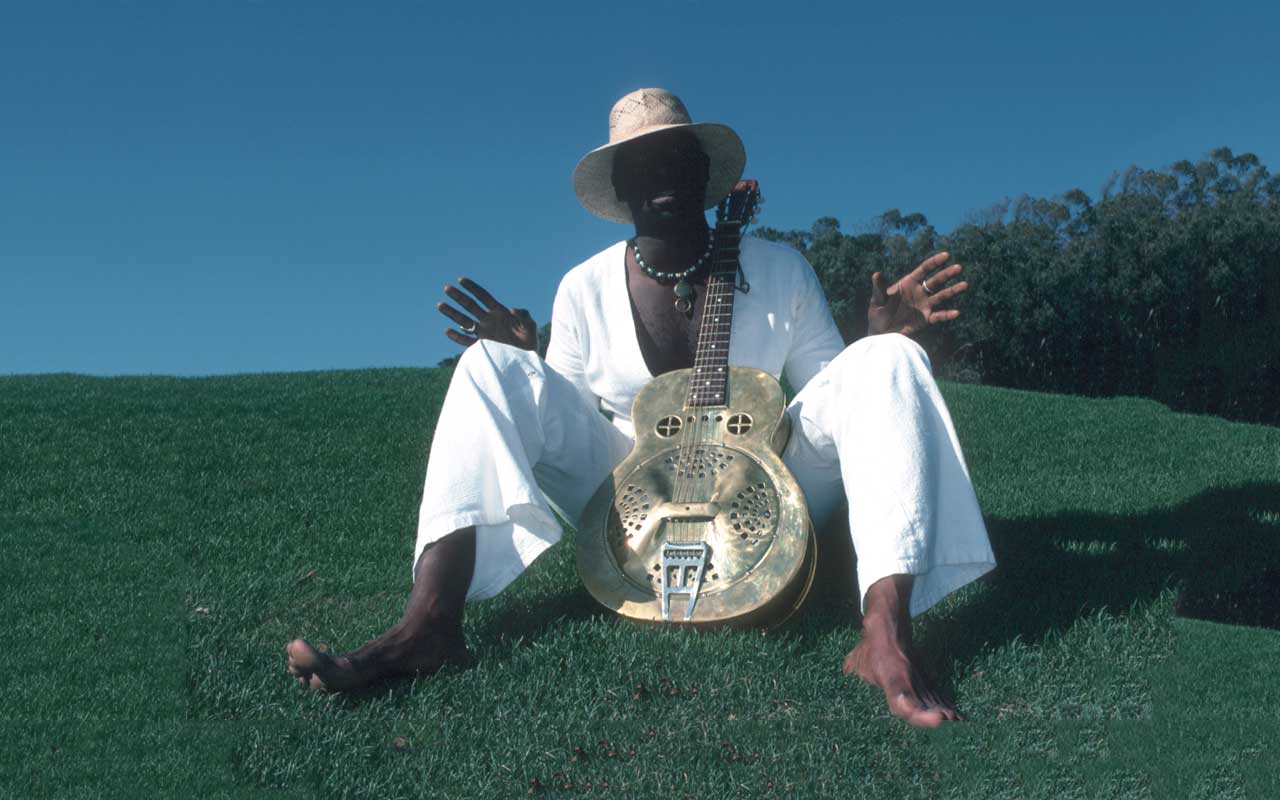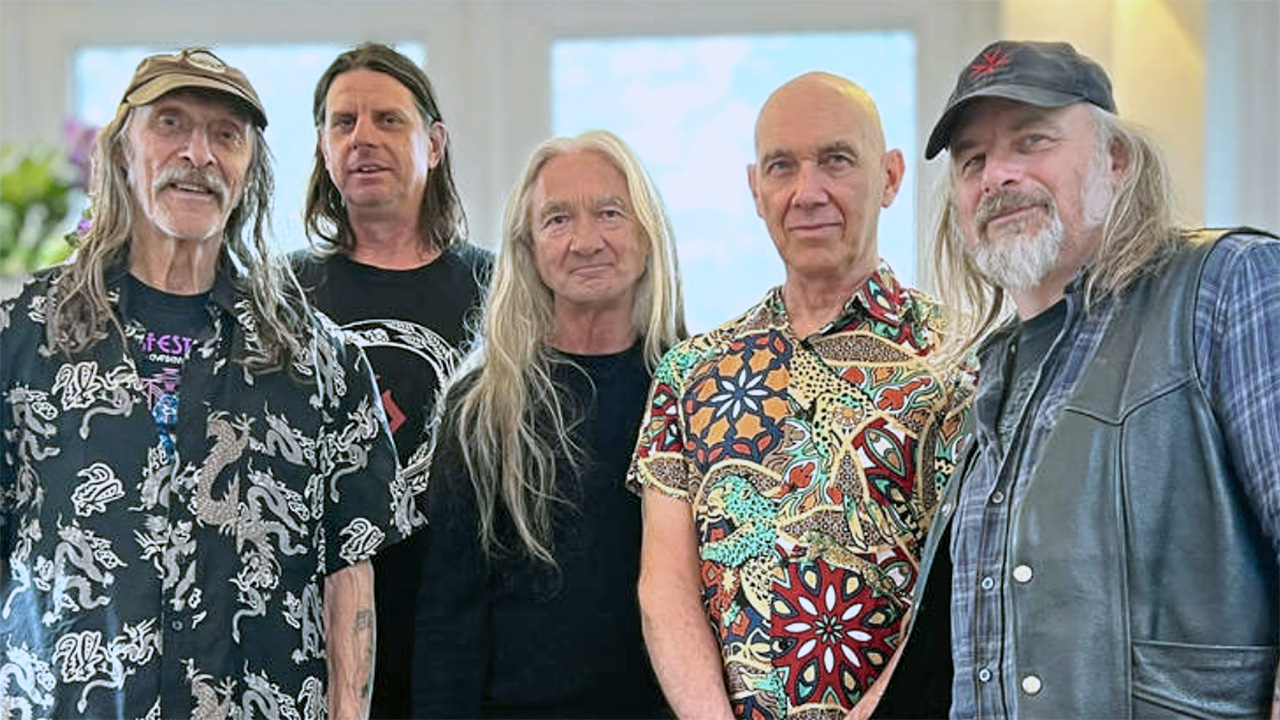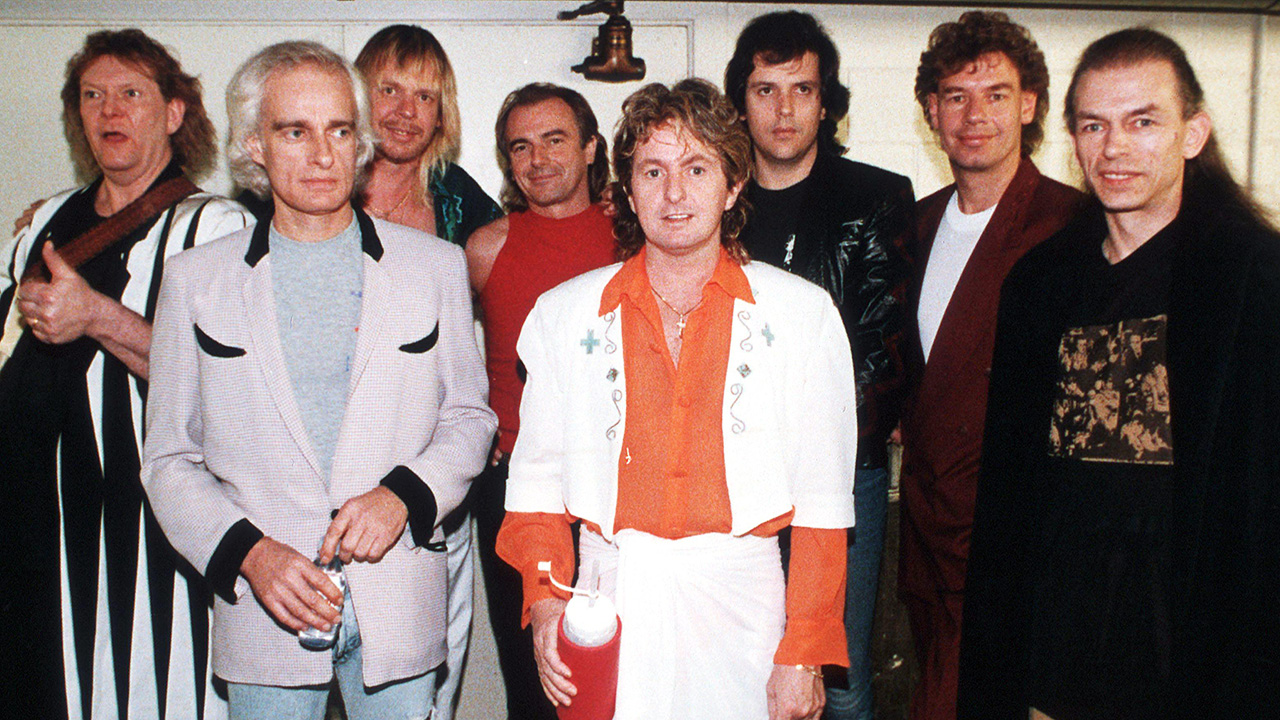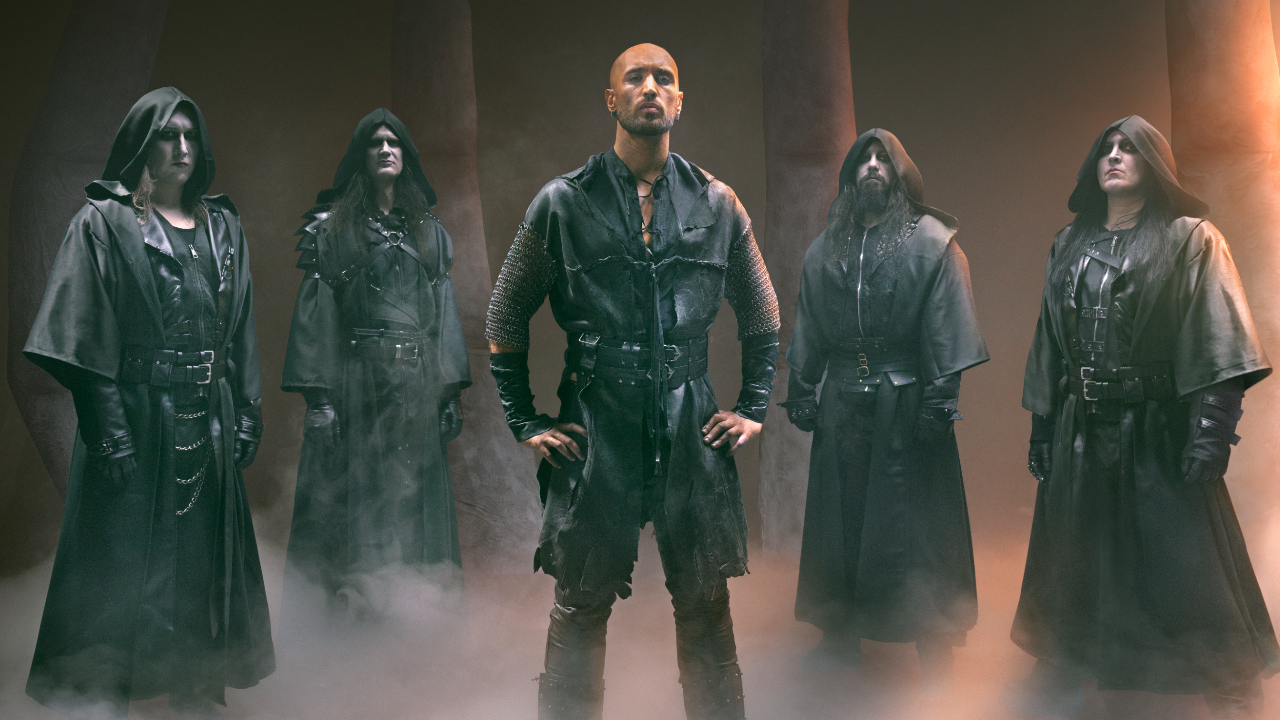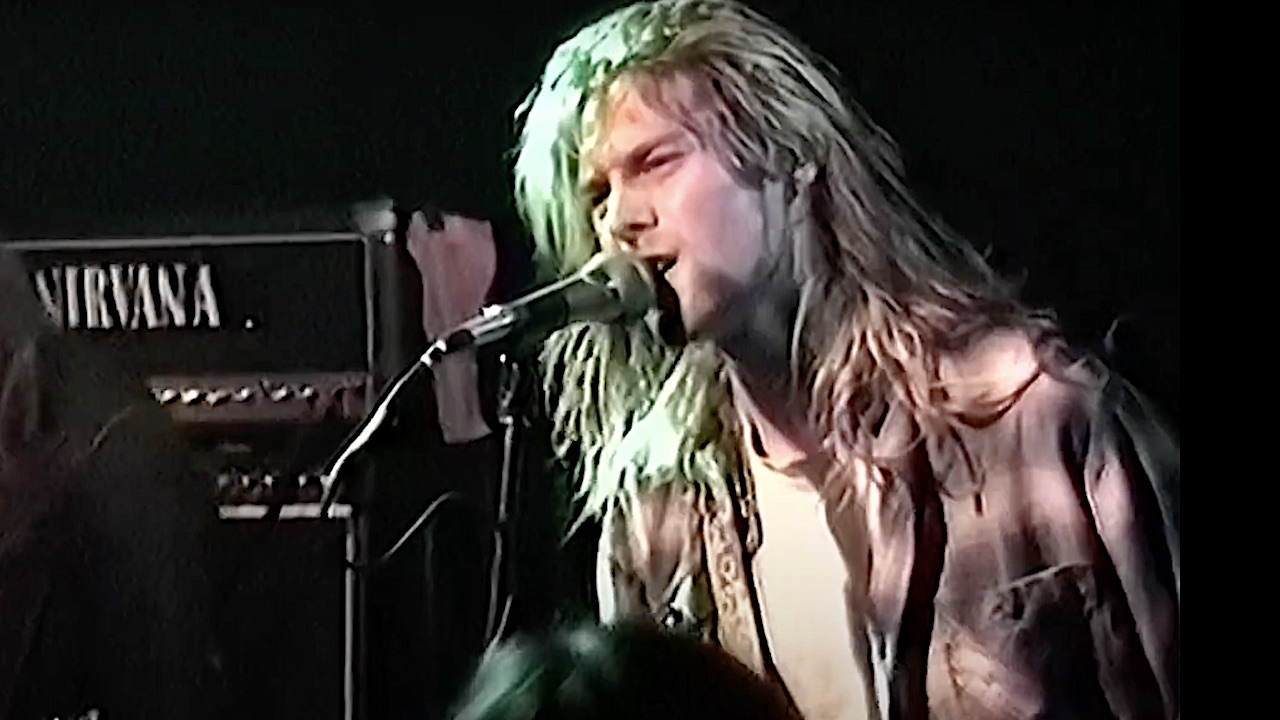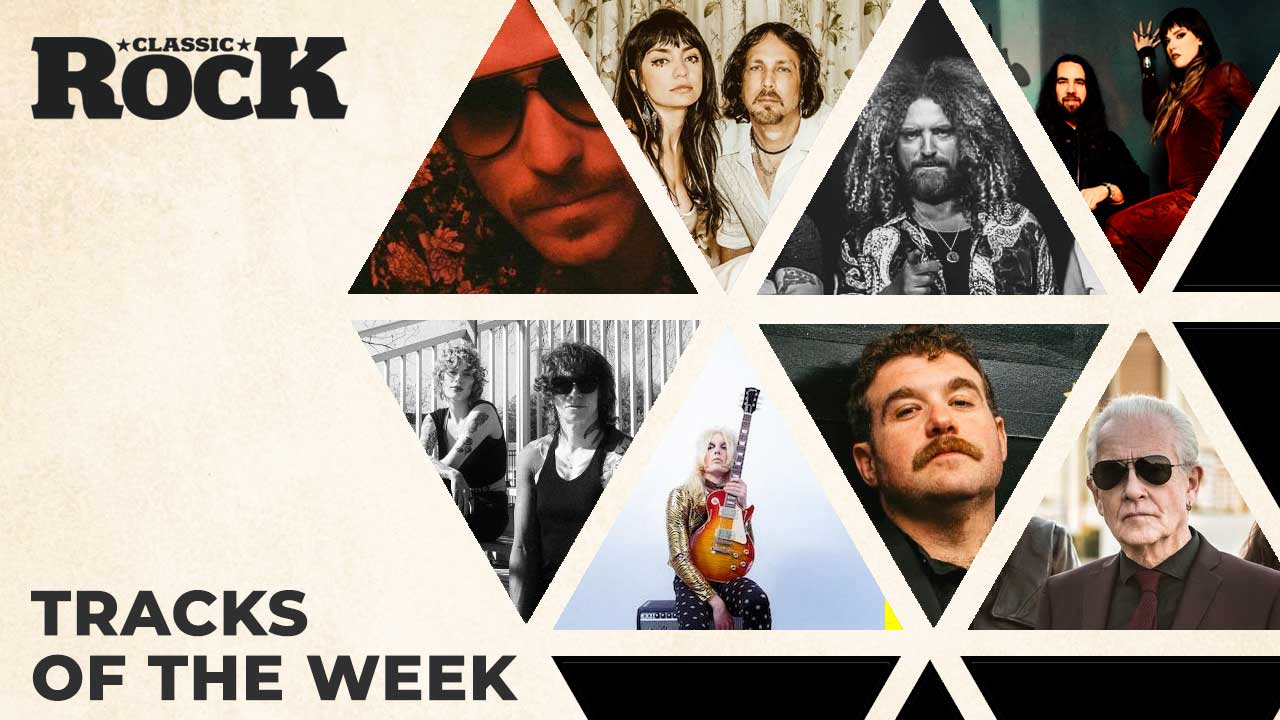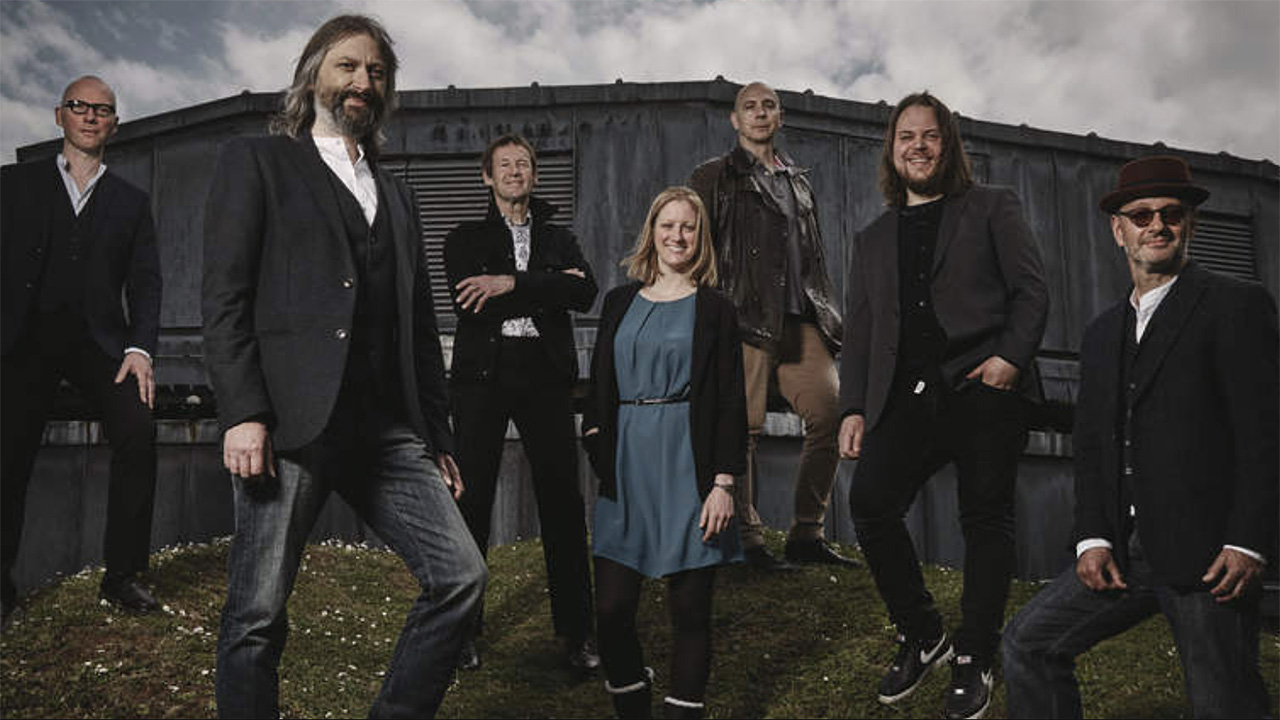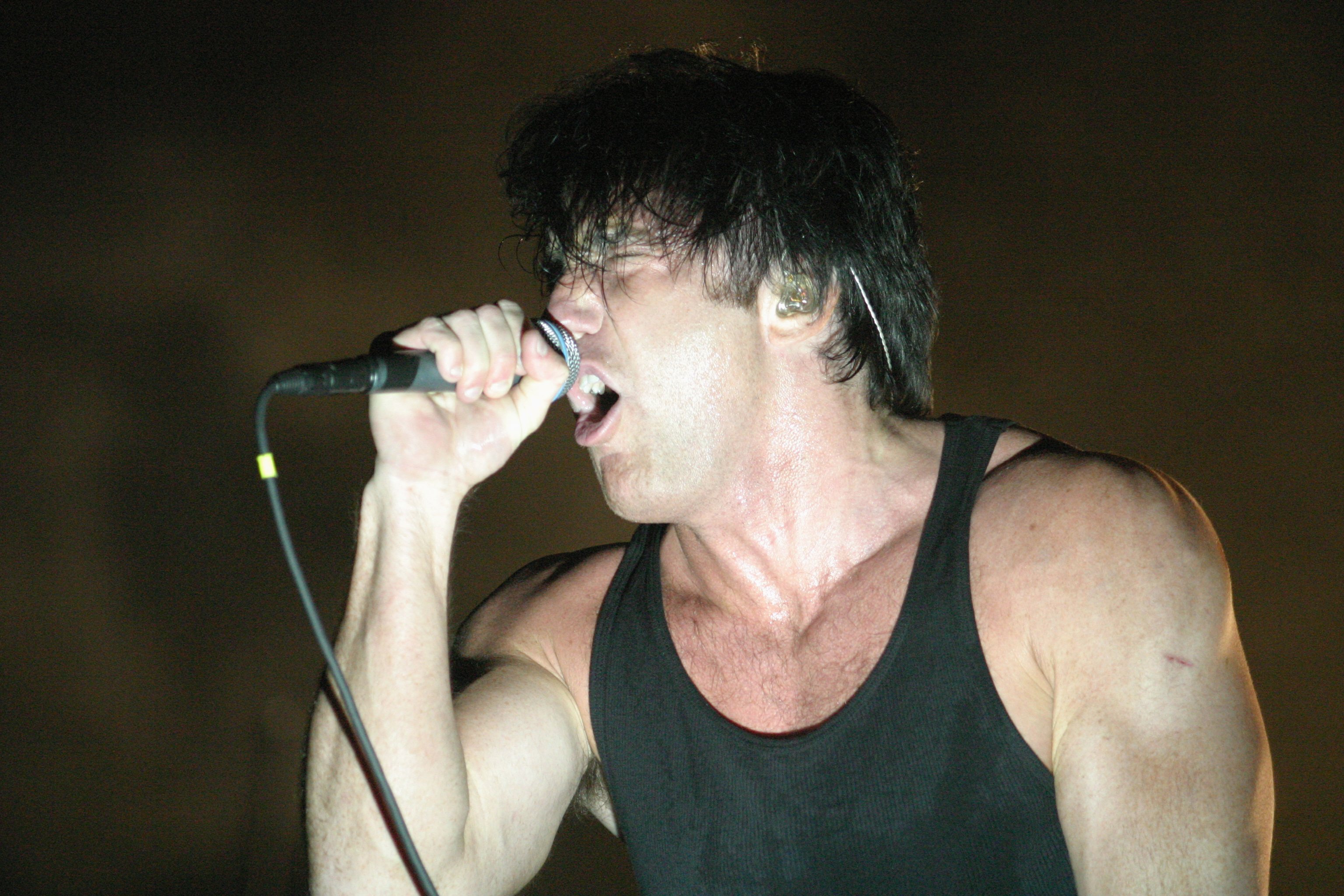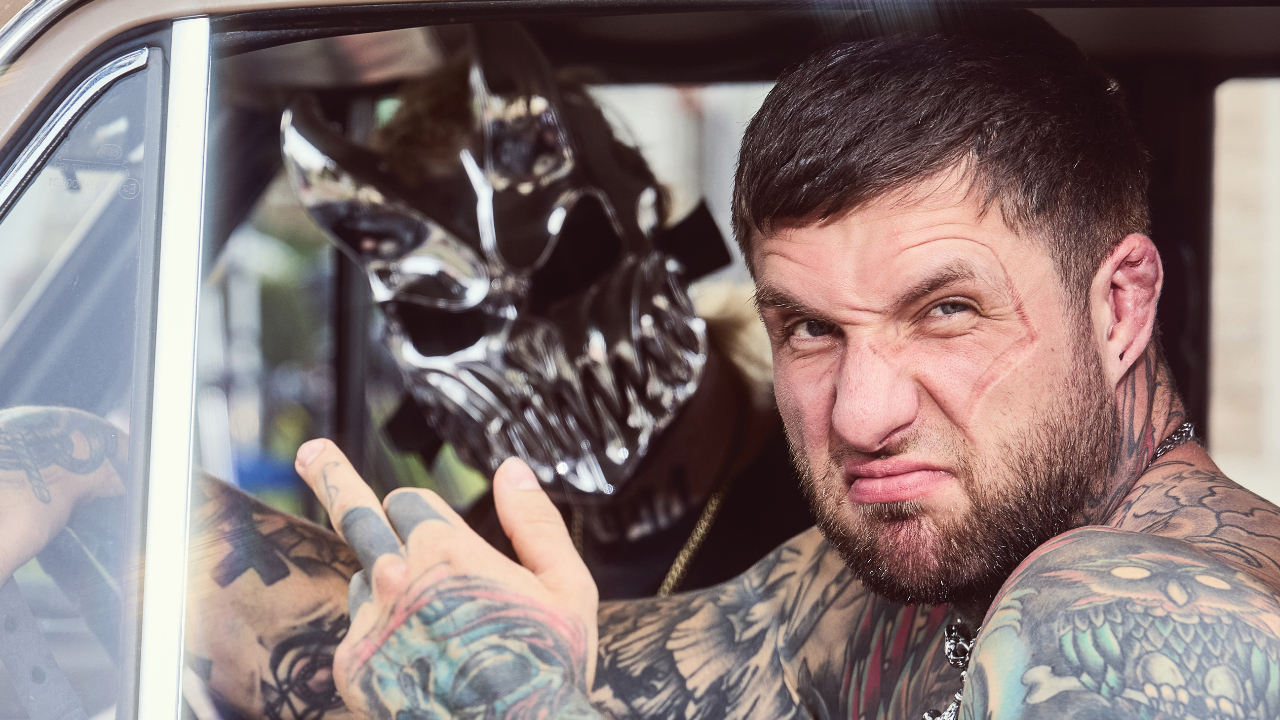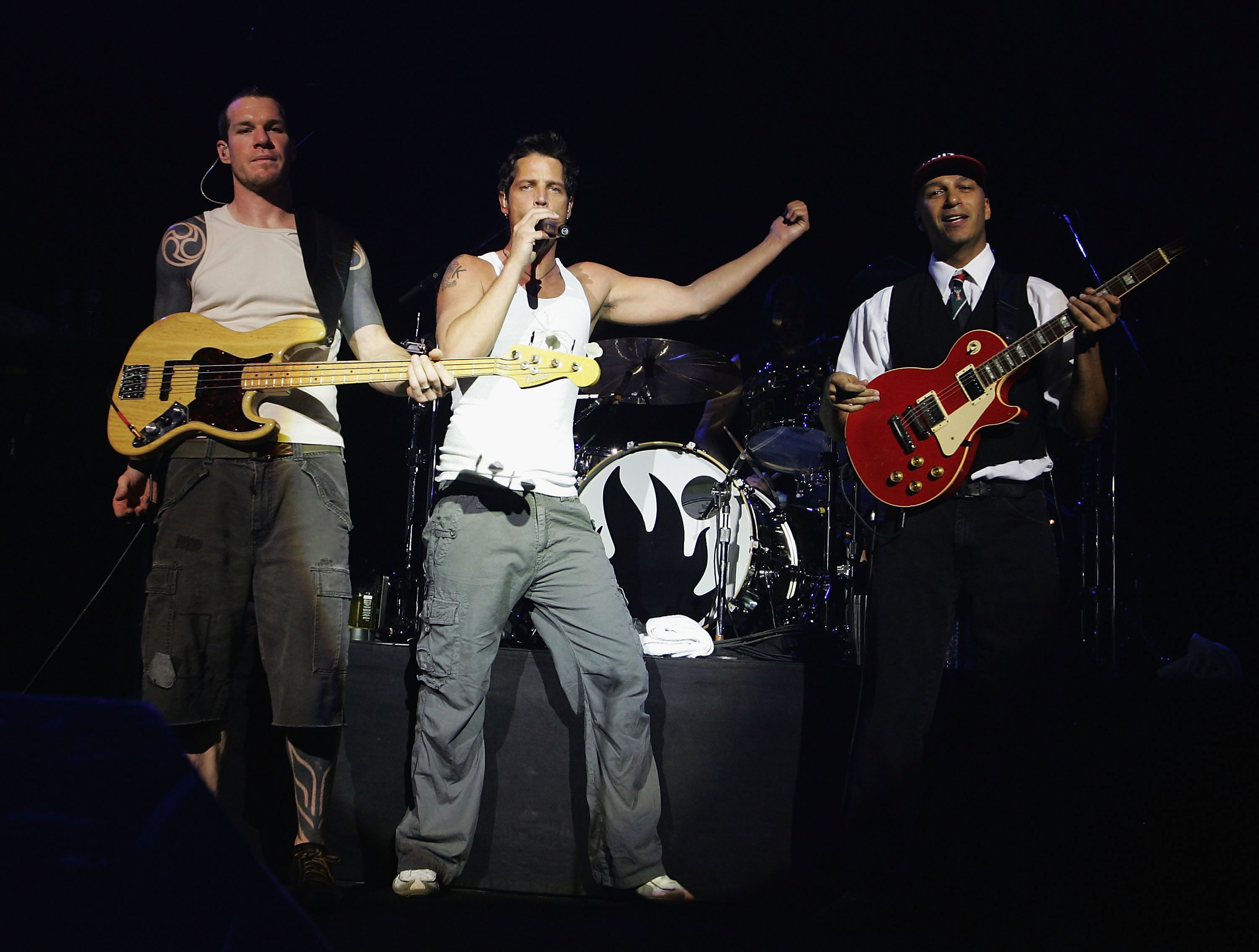Radio City Music Hall, New York, February 1998. The 40th annual Grammy Awards becomes one of the more eventful award ceremonies of the year when Best Album winner Bob Dylan’s perfomance of Love Sick is disrupted by a stage-invader with the words ‘Soy Bomb’ scrawled on his bare chest.
The controversy doesn’t totally overshadow the music. Amid all the furore, a man who not so long ago had been more or less forgotten received one of best receptions of the night. The 55-year-old Taj Mahal had scooped his first ever Grammy, for Señor Blues, his 20th album. It’s a sweet moment for a man who has devoted his working life to expanding and remapping the blues in a way that’s taken it way beyond its normal parameters. And endured his fair share of brickbats in the process.
“It was great to win, because at one time everybody got onto my back about what I was doing,” he says today. “No record company was interested in recording me. The industry was always having a hissy fit: ‘Mr Mahal, will you please get in the box?’ No thank you, it doesn’t fit me.”
But then Taj Mahal was never a conventional bluesman. A Harlem kid with Caribbean roots, he stripped the blues to its raw essentials in the 60s, before digging deeper and uncovering the hidden wiring that connected it to West Indian folk, R&B, gospel, Latino and African music. One part curator and two parts seeker, Mahal was arguably America’s first global pioneer, playing world music before the term had even been invented.
Eric Clapton was one who tuned in. In his autobiography, he wrote that the main pull of Mick Jagger’s invitation to The Rolling Stones Rock And Roll Circus TV special in late ’68, was the prospect of seeing Mahal up close. Keith Richards had already been jamming with Taj and Gram Parsons in LA. Richards admitted that Mahal showed him a few things, adding: “He’s got it all together and always did have.”
Indeed, Mahal was the sole representative of black American blues, the music the Stones adored above all others, at the Rock And Roll Circus. Filmed at a sound stage in Wembley, he cut a striking image – wide-brimmed hat, red neckerchief, leather waistcoat – amid such starry company as Clapton, John Lennon, The Who, Marianne Faithfull and many others. He looked like what he was: the hippest of the hip.
“Taj is a fabulous player,” gushed Charlie Watts, “like a one-man band.”
Born Henry Saint Clair Fredericks in 1942, his family moved from Harlem to Springfield, Massachusetts, when he was still young. Both parents were involved in music: his mother sang in a gospel choir, while dad was a noted jazz pianist and arranger. Henry Jr. nurtured an early appreciation of Charles Mingus and Thelonious Monk. But the biggest inspiration was a cultural one.
“My grandparents emigrated to the United States and my mother’s family migrated from South Carolina to New York City,” Mahal explains, in a voice that sounds like smoke seeping through cracked leather. “My parents talked about this history and I came to know all about Africa and the British Empire. So I would hear music and it would represent where it was coming from. I was interested in any music with a bluesy sound. I didn’t care if it was country or classical. But when they bent that thing to the blues, my spirit pricked up. I was just wanting to play that music for myself. It was something like an ancestral sound.”
Having begun playing guitar in his teens, he juggled music with college studies in animal husbandry. But it was the blues that finally won out. He drew from traumatic first-hand experience too. His father was killed in an accident at his construction company, crushed by a tractor.
“I was a kid who lost his dad at 11-and-a-half years old,” says Taj, “and the blues was our way of expressing the deepest sorrows that we had. And we had plenty to work with.”
It was at university that he adopted the name Taj Mahal (it came to him in a dream) and led R&B group The Elektras. In 1964, he and friend Jessie Lee Kincaid set out for California to explore LA’s burgeoning coffeehouse scene. There, they met a young guitarist with a similar curiosity for folk and blues named Ry Cooder. Like Mahal, Cooder was fascinated with the fluid possibilities of roots music. Bonding over Delta blues while jamming at the Teenage Fair on Sunset Boulevard, they decided to make the next obvious step: start a band.
The Rising Sons comprised Mahal, Cooder, Kincaid, bassist Gary Marker and future Spirit drummer Ed Cassidy (the latter replaced by Kevin Kelley within a year). With Kincaid and Mahal sharing vocal duties, they wowed West Coast crowds with amplified versions of blues songs by Skip James, Charley Patton and Sleepy John Estes alongside a handful of originals. They opened for The Temptations and Otis Redding, and Mahal started rubbing shoulders with heroes like Howlin’ Wolf, Muddy Waters and Lightnin’ Hopkins.
Columbia snapped them up and booked a studio with producer Terry Melcher, fresh from his success with The Byrds. But things didn’t pan out.
“We managed to get some stuff together for that first album,” recalls Mahal. “It sounds like five guys having a good time, trying to put a more organic spin on bluesy folk-rock. But the problem was all the politics. Terry Melcher said that if he had to do it again he would’ve had two bands: one that was behind Jesse Lee Kincaid, who was more like The Beatles or Dylan, then the other band would’ve been Ry and myself, which was more bluesy.”
The album never arrived and the band split in 1966. Despite setting the blueprint for such psych-blues avatars as The Grateful Dead and Moby Grape, The Rising Sons’ recorded legacy amounted to a sole 45, Candy Man/The Devil’s Got My Woman (the album would finally emerge 26 years later).
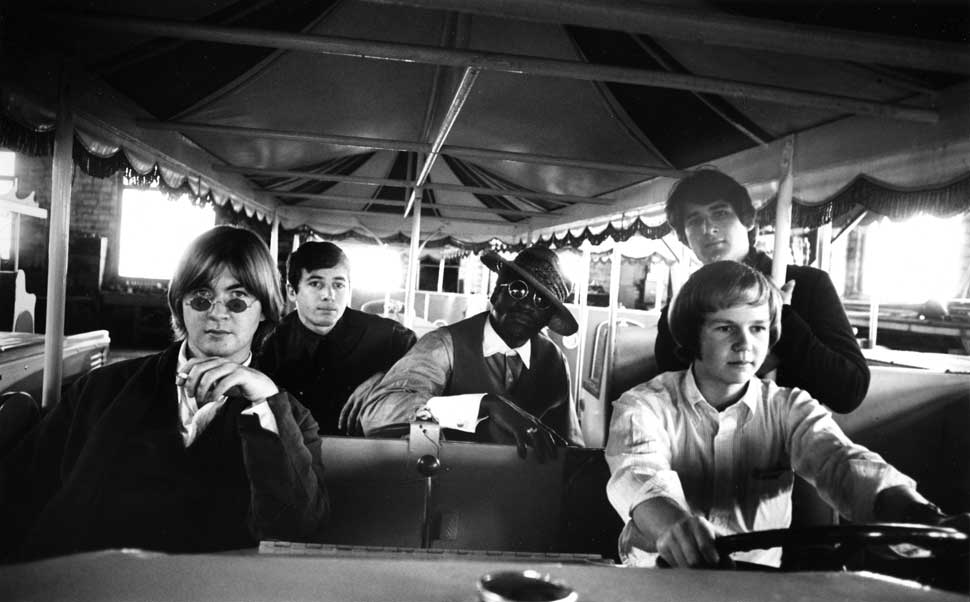
But Columbia knew what they had. Mahal was kept on as a solo artist and, in 1968, delivered a vivid debut album that swept the dust from old blues classics like Statesboro Blues, Leaving Trunk and Everybody’s Got To Change Sometime. Cooder fetched up as a guest, but it was the eloquent interplay between Mahal and fellow guitarist Jesse Ed Davis that impressed. As a slide player, Mahal was exceptional. He blew a mean harp too, while the warm crackle of his voice made the songs jump.
The record’s ingenuity didn’t translate into sales, but his peers had taken note. Mahal remembers one particular night at the Whiskey A Go-Go, “In those days I had a habit of playing harmonica with my eyes closed. So I’m playing along, then I suddenly look down and there’s Mick Jagger, Keith Richards, Brian Jones, Bill Wyman, Eric Burdon, Hilton Valentine and Chas Chandler, all on the floor dancing.
"Afterwards, the Stones waved me over and we sat down and talked. I said to Mick: ‘I don’t know what you guys have got in the water over in England, but it must be great to hear the blues on the radio at seven in the morning. If you ever have a project and you think we could help out, please don’t be afraid to ask.’ And that was the beginning of it. Three or four months later, eight round-trip plane tickets came in the mail.”
The Rolling Stones' Rock And Roll Circus was intended as a BBC showcase for the newly released Beggar’s Banquet. Taj’s band played four songs, and were primed for a British breakthrough. But it didn’t go to plan. The Stones were unhappy with their own performance, feeling it lacked fire, and pulled it from nationwide TV.
Mahal may have missed his chance, but his memories remain precious.
“I was talking to Marianne Faithfull recently,” he says, “and she remembers walking arm-in-arm with Mick and I, early in the morning, down the Thames. We were getting to know one another and talking about music and things. It was really just a great time. Brian [Jones] and I especially had lots to talk about. I just loved those guys for what they did with the blues. They never held back, they always gave it the full treatment.”
Back in the US, Mahal swiftly followed up his debut with The Natch’l Blues, which broadened his palette to include two soul covers and featured a crack band including pianist Al Kooper and Little Richard’s old drummer, Earl Palmer. His 1969 half-electric-half-acoustic double LP, Giant Step/De Ole Folks At Home, was even more impressive, and became the first Mahal album to duck inside the Billboard Top 100. He shared bills with Frank Zappa, Led Zeppelin and others. Moving up the coast to San Francisco also helped from an artistic standpoint.
“The musicians there were really particular about who they played with,” he remembers. “And the promoters. I was lucky that people really liked my music. Our name is on a lot of the old Fillmore posters. We had Zeppelin opening for us and played with The Kinks.”
The music continued venturing far and free. 1971’s Happy Just To Be Like I Am dug into the realm of calypso, while 1974’s Mo’ Roots found Mahal exploring the links between blues and Jamaican reggae, to the point where The Wailers’ bassist Aston ‘Family Man’ Barrett guested on a cover of that band’s Slave Driver.
But Mahal’s pluralism wasn’t to everyone’s taste. Sales were less than spectacular, and he quit Columbia for Warner Bros. in 1976. Three albums for his new label didn’t revive his fortunes. By the end of the 70s he was out of contract. “I would’ve gladly stayed on forever in reinterpreting and composing blues and R&B,” he explains, “but no one was interested in recording me.”
Mahal relocated to Hawaii and began making children’s albums. 1987 saw a rare new studio effort, simply called Taj, but it wasn’t until the early 90s that he fully re-engaged with the music industry. Finding a sympathetic home at Private Music, co-founded by ex-Tangerine Dream member Peter Baumann, allowed him to rediscover his groove on albums such as 1996’s Phantom Blues (featuring guest appearances from Eric Clapton and Bonnie Raitt).
His third release for the label, Señor Blues, won him the Grammy (“The upshot was that people actually got to hear that album,” he says), and he bagged another for the live album Shoutin’ In Key. But crowning glory of Mahal’s comeback came with 1999’s Kulanjan, a collaboration with Malian kora player Toumani Diabaté. This was Taj as cultural warrior, splicing West African idioms with primal blues (it was a favourite of Barack Obama).
“It’s something I really wanted people to hear,” says Mahal. “How many American musicians actually get to play with the contemporaries of their ancestors? Kulanjan was an opportunity for me to listen my way back to them. Afterwards I didn’t feel like I needed to pick up a guitar again, I could’ve just gone off and played kora. It wouldn’t have bothered me one bit.”
The renaissance hasn’t let up. Mahal’s influence can be heard in the music of the mutable American bluesman who followed him, free spirits like Eric Bibb, Alvin Youngblood Hart, Gary Clark Jr. and Keb’ Mo’. The latter has cited a Taj gig during as a creative awakening: “Taj Mahal is the quintessential example of a person motivated by the truth about who he is and what life is to him.” In 2017, he hooked up with Mahal for another Grammy-winning album, TajMo.
“A lot of players are just hackers, hacking away at something they have no idea about,” Mahal says. “But all you’ve gotta do is step out of the boxes that they try to put the blues in. It’s incredibly fertile ground. Even at my age, I’m always finding something new.”

Five Essential Taj Mahal albums
Taj Mahal (Columbia, 1968)
Aided by Ry Cooder, Taj digs into prime Delta dirt for electric versions of Dust My Broom and Statesboro Blues. As raw and uninhibited now as it was then.
Giant Step/De Ole Folks At Home (Columbia, 1969)
The two sides of Taj: Giant Step mixes electrifying originals and raucous versions of Goffin-Kind and Leadbelly songs; the unplugged De Ole Folks features hushed intimations of Stagger Lee and Candy Man.
Rising Sons Featuring Taj Mahal And Ry Cooder (Legacy, 1992)
Recorded in the mid-60s but long shelved, the Sons’ sole album brings together slide blues and Byrdsy rock. Old-school staples Devil’s Got My Woman and 44 Blues show the telepathic interplay between Mahal and Cooder.
Señor Blues (Private Music, 1997)
The sound of Taj rediscovering his blues mojo. Horace Silver’s title track is a highlight, though Taj’s own Queen Bee is pretty damn essential.
Kulanjan (Hannibal, 1999)
Taj’s collaboration with Malian kora master Toumani Diabaté is a wondrous conflation of West African textures and blues grooves, with both styles breathing life into the other.
